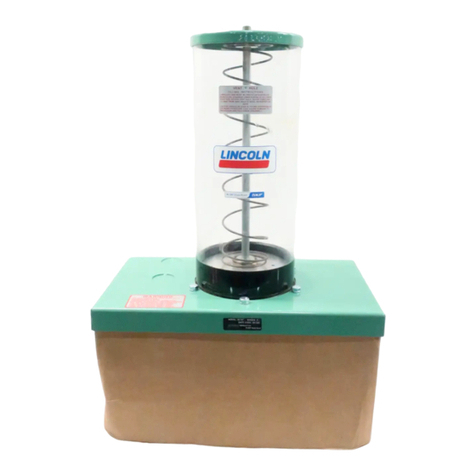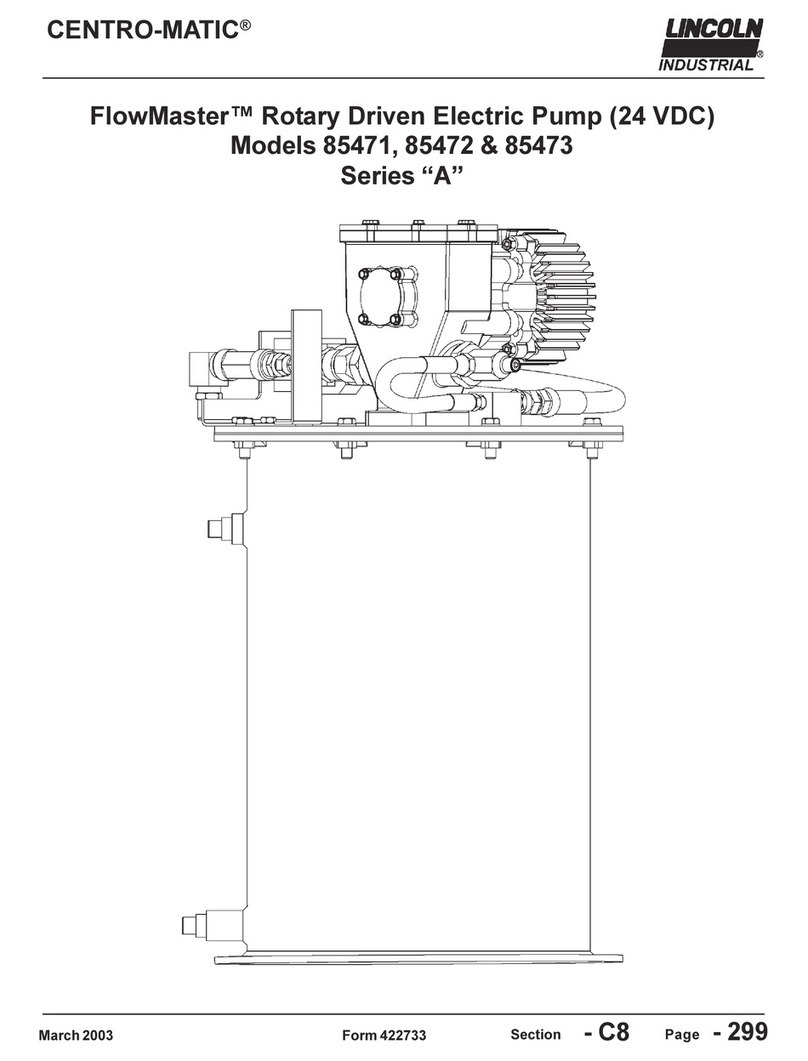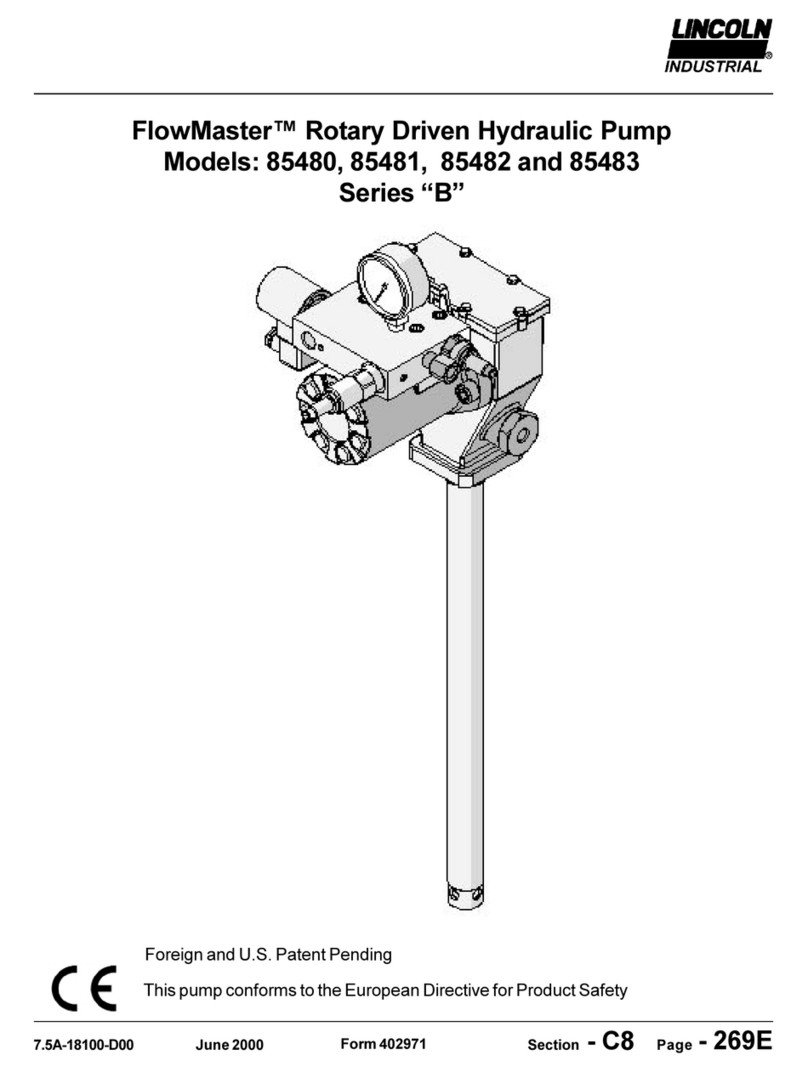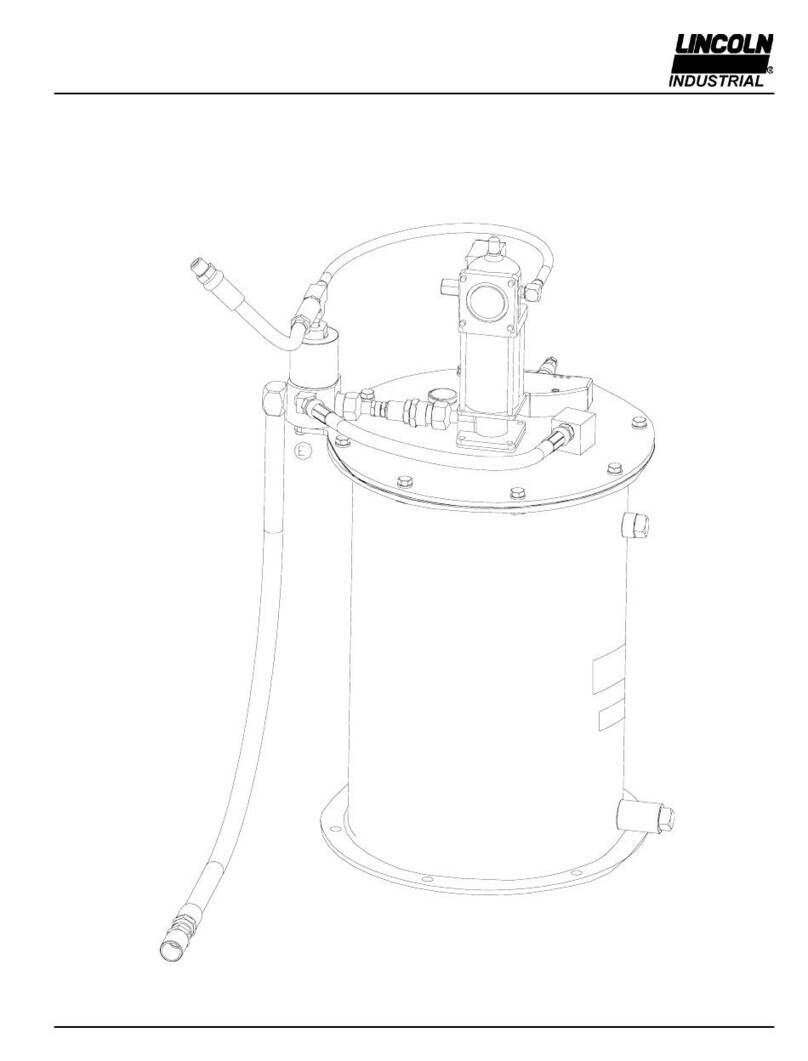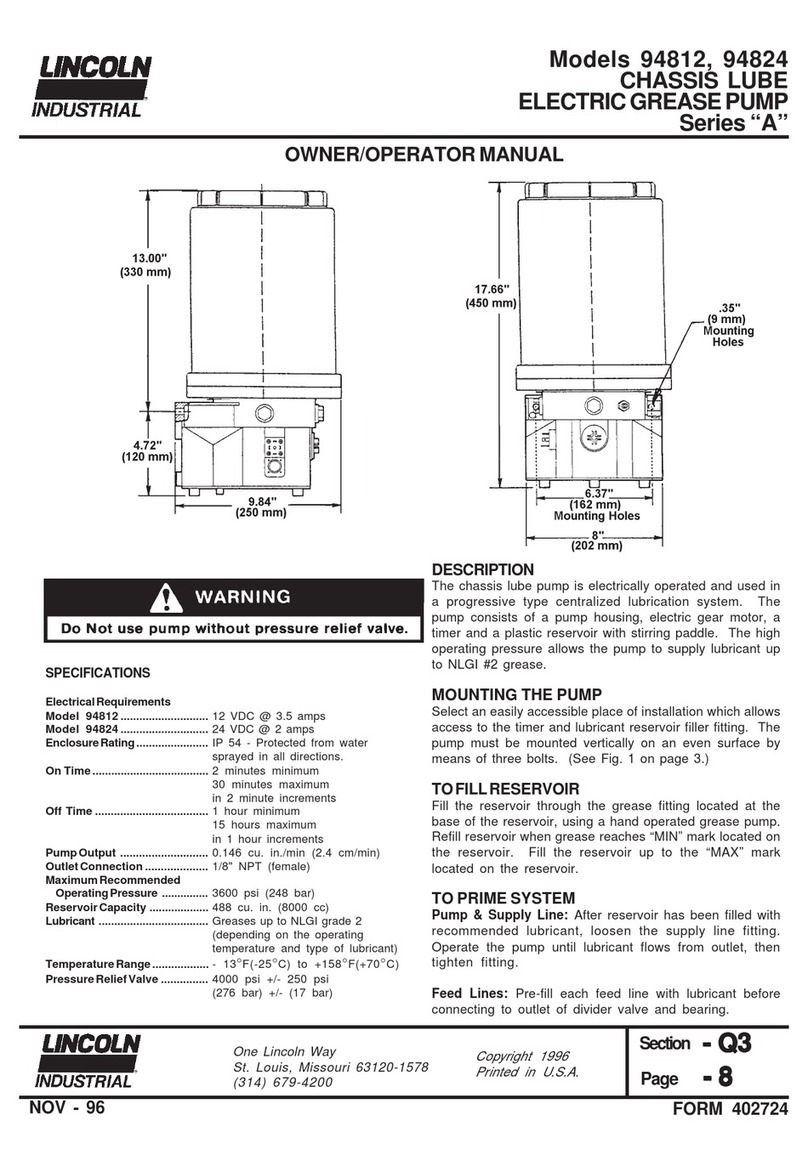
Page Number - 7
CENTRO-MATIC®
4.1A-68010-D99
Form 403086
7. Be sure that all wires are connected to the correct locations on
the terminal strips.
8. Connect the ribbon cable plug from the keypad (6) to the mating
plug on the timer/controller board (4). The plug should be plugged
into the timer/controller board so that the ribbon cable has no
twist in it; it must be parallel to the face of the enclosure when the
keypad is installed.
9. When reinstalling the keypad (6), be sure that the ribbon cable is
gently folded into the enclosure behind the keypad, and not
pinched between the keypad and enclosure.
Solenoid Valve Replacement
(See Illustration 3)
Warning! Electical shock hazard. Disconnect and
lockout all power to the pump unit before removing
the keypad of the timer compartment.
(Note: Replacement of the solenoid valve does not require removal of
the pump assembly from the mounting surface)
1. Turn off the air and power supply to pump assembly.
2. See Timer/Controller Replacement, above, to remove the keypad
(6) and timer/controller board (4).
3. Disconnect air line from pump assembly. Remove any muffler or
connections from the exhaust port.
4. Remove the enclosure by removing two Phillips head screws (2)
from the bottom side of the enclosure (1).
5. As the enclosure is removed from the assembly, gently pull the
solenoid and green ground wires through the grommet (3) in the
enclosure back towards the solenoid valve.
6. Remove the solenoid valve (14) using a 3/32 allen wrench to
remove the two cap screws (15) holding it to the bottom of the air
cylinder (11). Do not lose the gasket (13) that is placed between
the valve and air cylinder (11).
7. When replacing the solenoid valve, make sure the solenoidvalve is
the correct part number and voltage as the valve to be replaced.
8. Reassemble in reverse of the above procedure. Take care in pulling
the solenoid and green ground wires through the grommet (3).
Oil Reservoir Service
(See Illustrations 3, 6 & 7)
(Note: Replacement of the reservoir tube does not require removal of
the pump assembly from the mounting surface)
1. Turn off the air supply to the pump assembly.
2. Turn off the power supply to the pump unit.
3. Remove lubricant from the lubricant reservoir. Oil pump reservoirs
may be drained by removing the drain plug (8) from the front of the
pump unit with a 9/16 wrench.
4. Clean off reservoir tube and area around reservoir to prevent
getting dirt into the lubrication system.
Warning! Failure to drain reservoir will result in
lubricant leakage out of reservoir when the nut (46)
securing the reservoir in place is removed.
5. Disconnect supply line from pump outlet.
6. Remove nut (46) from the top of the reservoir cap (44) using a
1-3/8 wrench.
7. Remove reservoir cap from top of reservoir.
8. Slide the reservoir tube off the pump over the center post.
9. Remove gasket (35) if necessary.
10. Reassemble in reverse of the above procedure.
11. Tighten nut (46) to 10 to 15 ft.-lbs. [1.4 to 2.1 kg-m].
Grease Reservoir Service
(See Illustrations 3, 8 & 9)
(Note: Replacement of the reservoir tube does not require removal of
the pump assembly from the mounting surface)
1. Turn off the air supply to the pump assembly.
2. Turn off the power supply to the pump unit.
3. Remove lubricant from the lubricant reservoir. Grease pumps
may be emptied by carefully removing the filler fitting (7) from
the unit with a 7/8 wrench. (Depending on how full the reservoir
is, the grease may flow out of the reservoir very rapidly.)
Warning! Failure to remove all lubricant from
reservoir could result in a high spring force from the
reservoir spring (43) and/or a rapid discharge of
grease when nut (46) is loosened or removed.
4. Clean off reservoir tube and area around reservoir to prevent
getting dirt into the lubrication system.
5. Disconnect supply line from pump outlet.
6. Remove nut (46) from top or reservoir cap (44) using a 1-3/8
wrench. Carefully hold reservoir cap (44) against any residual
spring force while removing nut (46).
7. Remove reservoir cap (44) from top of reservoir.
8. Holding the follower down with the follower spring (43), carefully
work the reservoir off of the follower, leaving the follower and
spring in place on the pump assembly.
9. Remove follower spring (43).
10. Remove follower assembly by sliding up to the threads in the
center tube, and then threading the follower assembly counter-
clock-wise over the threaded portion of the center tube. Do not
force or pull the follower off of the center tube or damage will
result to the o-ring (38 or 48) inside of follower bushing (39).
11. Remove gasket (35) if necessary.
12. Disassemble the follower assembly by removing retaining ring
(42), using external retaining ring pliers, from bushing (39).
Washers (40) and follower packing can now be removed
from bushing (39). Remove o-ring (38 or 48) from the nternal
groove in the inner hole of the bushing (39); use a pointed tool,
such as a pick to remove.
13. Reassemble in reverse of the above procedure with the following
hints:
14. When installing the follower assembly onto the center tube,
lubricate the center tube liberally with grease. Lubricate the
o-ring (38 or 48) and the inside of bushing (39) with grease.
Thread, turning clockwise, the follower assembly down over the
center rod threads. Do not force or drive with hammer, or o-ring
damage will result in leakage of lubricant around follower. Side
the follower assembly down to the bottom of the tube.
15. When installing the reservoir tube, lubricate the follower packing
lips (41) and the inside of the reservoir tube (36) with grease.
The reservoir tube will have two vent holes in the side wall of
the tube close to one end of the tube. The reservoir tube (36)
must be placed on the pump with the vent holes near the upper

